
|
|
|
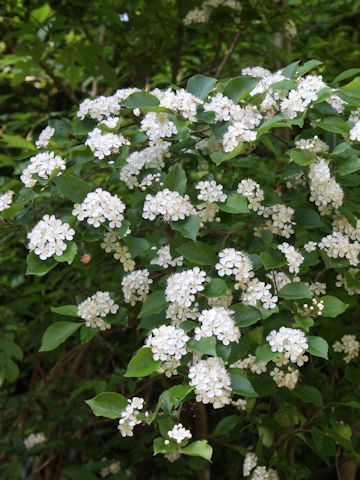 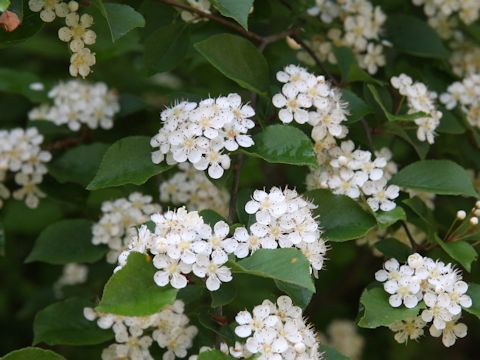 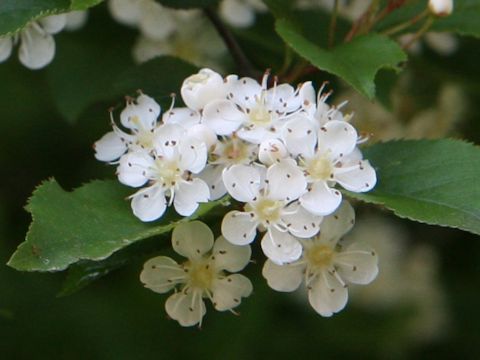 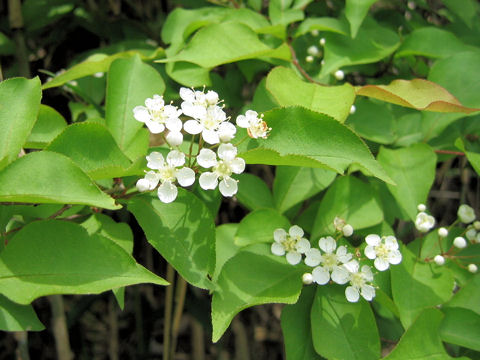 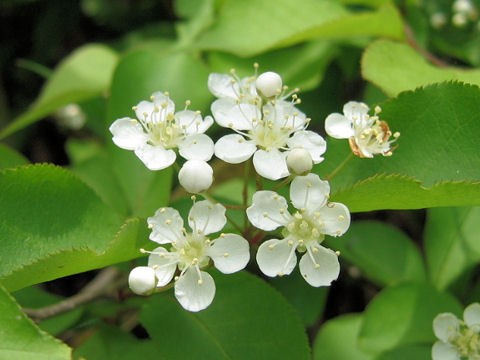 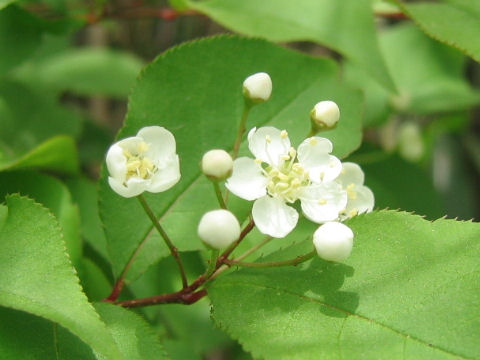 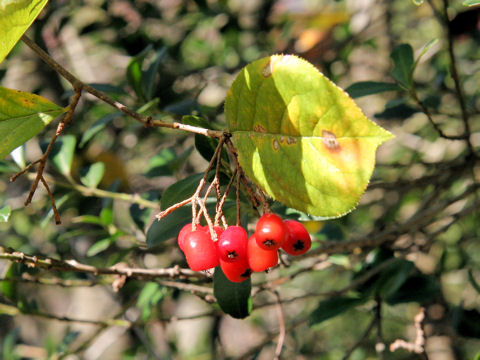 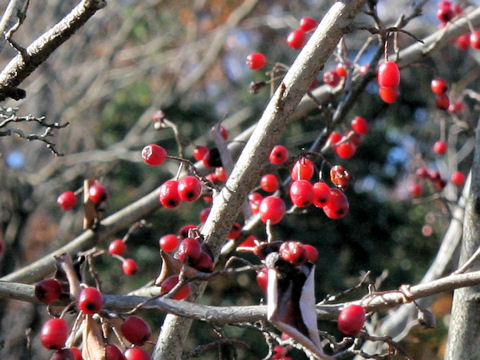 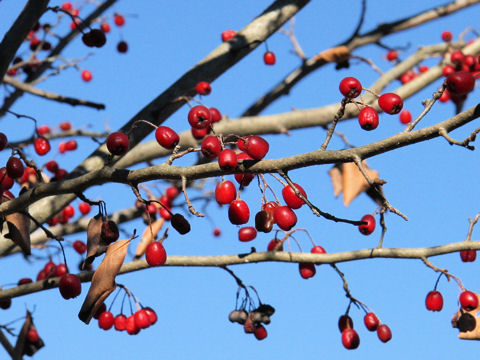 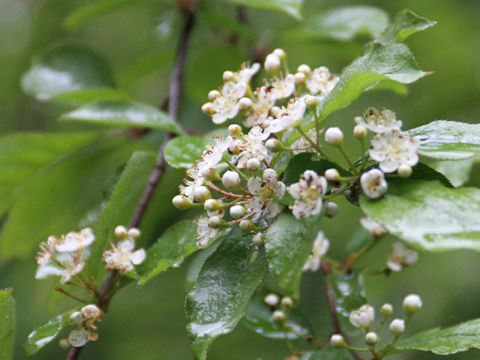 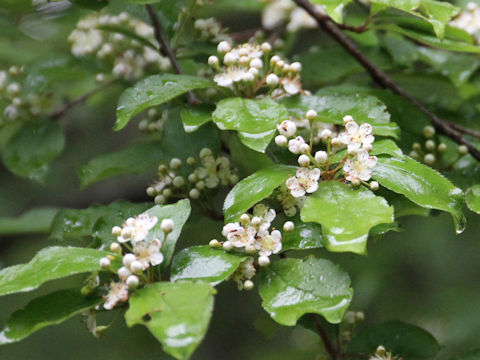 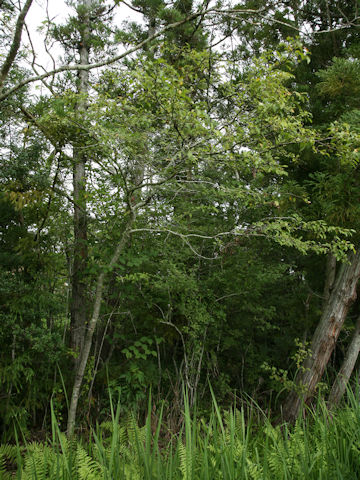 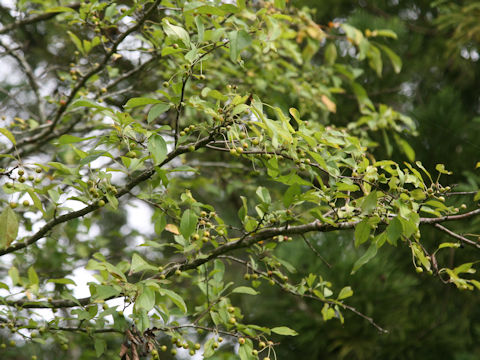 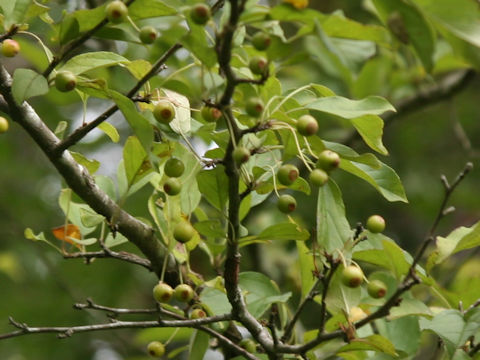 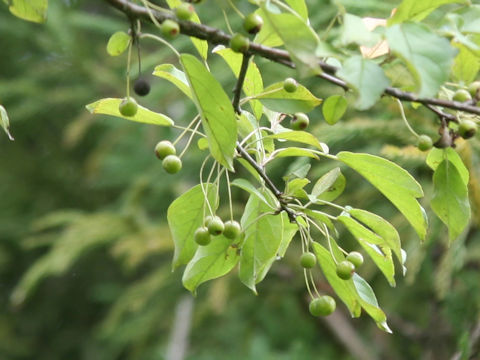 |
|
|
|
わが国の各地をはじめ、朝鮮半島や中国にかけて広く分布しています。低山や丘陵の林縁に生え、高さは4メートルほどになります。葉は卵形で長さは3〜9センチほど、縁には細かくて鋭い鋸歯があります。4月から5月ごろ、複散房花序に小さな白い5弁花を咲かせます。別名で「うしころし(牛殺し)」と呼ばれますが、これは堅くて粘り強い枝を曲げて、牛の鼻輪を作ったことに由来します。また「かまつか」の和名は、鎌や鍬の柄を作ったことによります。中国語では「毛葉石楠(mao ye shi nan)」と呼ばれます。 |
|
|
バラ科カマツカ属の落葉低木で、学名は Pourthiaea vilosa var. laevis (syn. Pourthiaea villosa var. villosa、Photinia villosa)。英名は Smooth oriental photinia。 |
|
|
The Smooth oriental photinia (Pourthiaea vilosa var. laevis) belongs to Rosaceae (the Rose family). It is a small deciduous tree that is widely distributed throughout Japan, the Korean Peninsula, and China. It grows along the forest margins of low mountains and hills, and grows up to 4 m high. The leaves are ovate, 3-9 cm long, and have fine, sharp serrations on the edges. It produces small white five-petaled flowers in compound umbels from April to May. It is also known as "Ushi-koroshi" (meaning "cow killer"), which derives from the fact that the stiff and sticky branches are bent to form the nose ring of a cow. The Japanese name "Kama-tsuka" comes from the fact that it was used to make sickle and hoe stipes. In Chinese, it is called "毛葉石楠" (mao ye shi nan). |
|
|
[上・中1〜2] 千葉県香取市田部にて、2012年05月11日撮影。 [中3〜中5] 岐阜県御嵩町古屋敷にて、2005年05月01日撮影。 [中6] 茨城県つくば市「つくば実験植物園」にて、2009年11月15日撮影。 [中7・中8] 群馬県高崎市「高崎市染料植物園」にて、2011年12月11日撮影。 [中9・中10] 栃木県那須町湯本「那須平成の森」にて、2017年06月08日撮影。 [中11〜13・下] 宮城県村田町「浮島の植物群落」にて、2024年08月22日撮影。 |

|
|
Shu Suehiro |